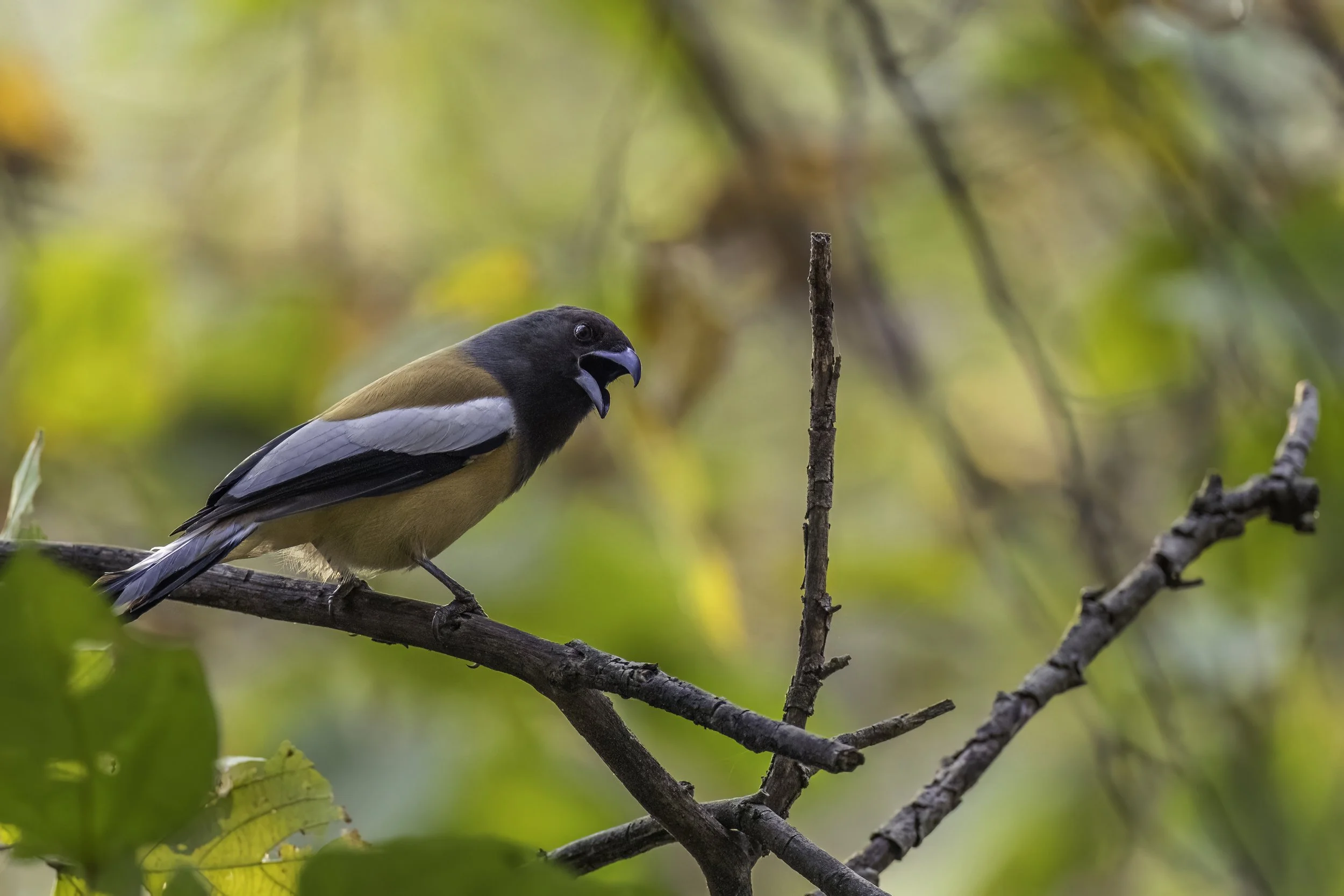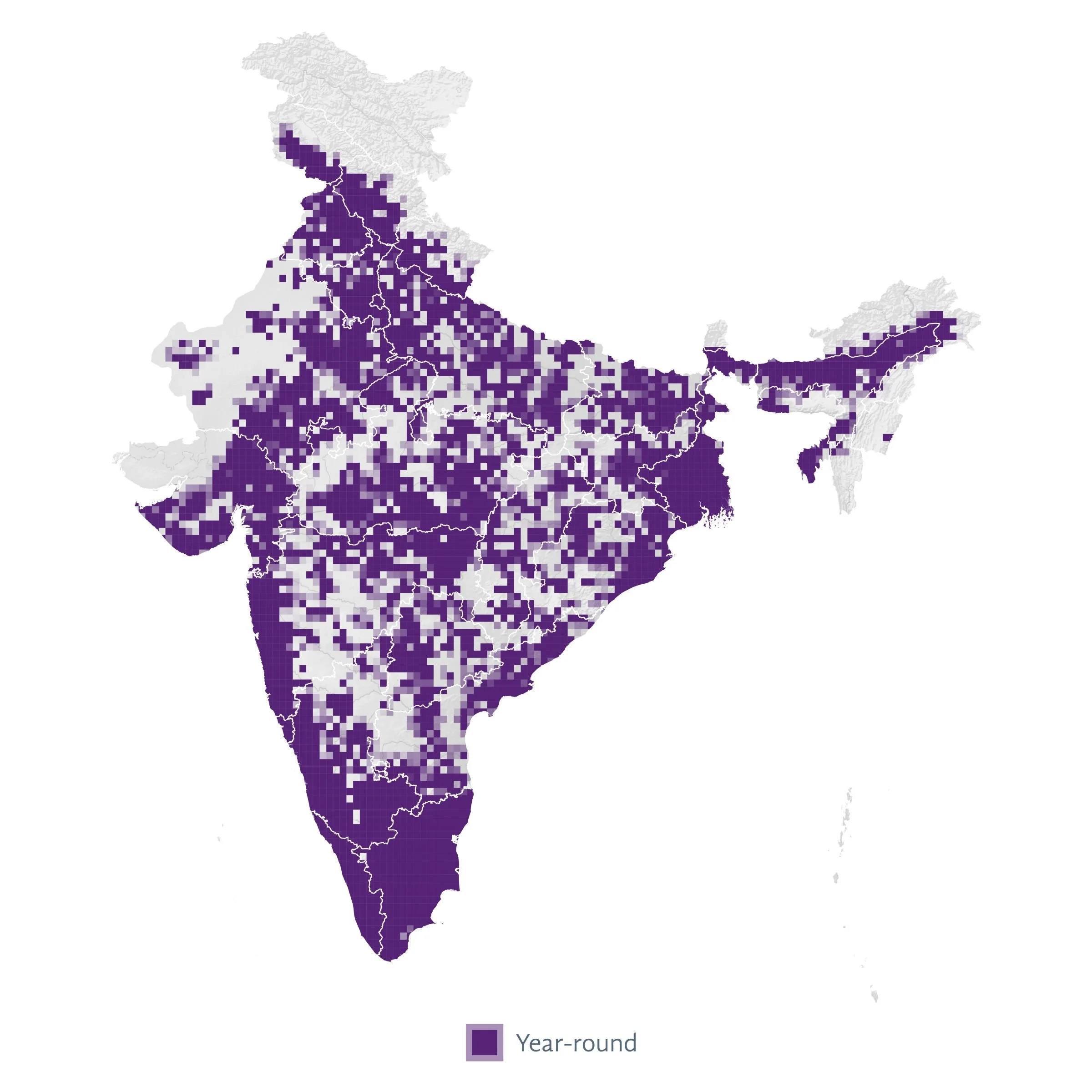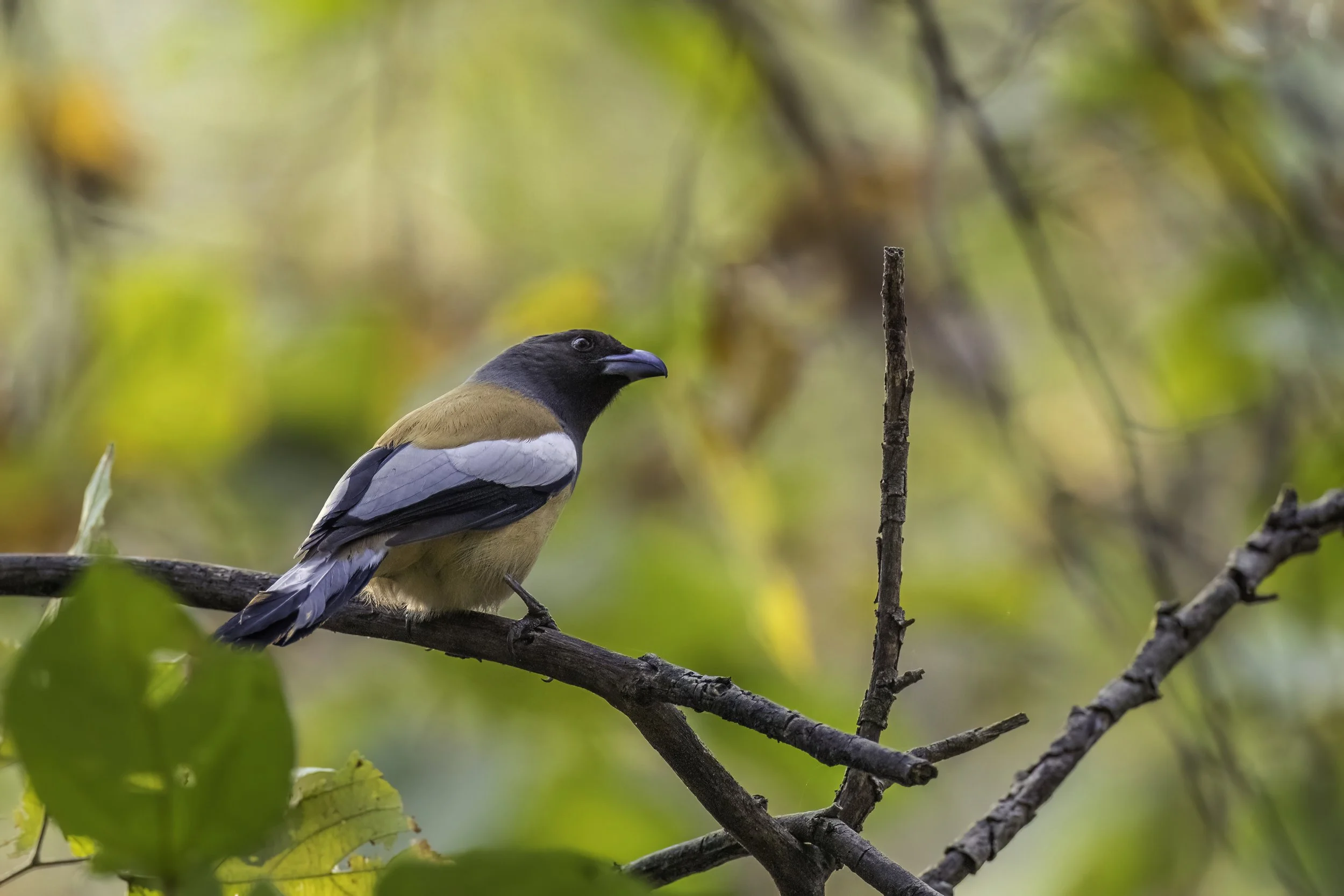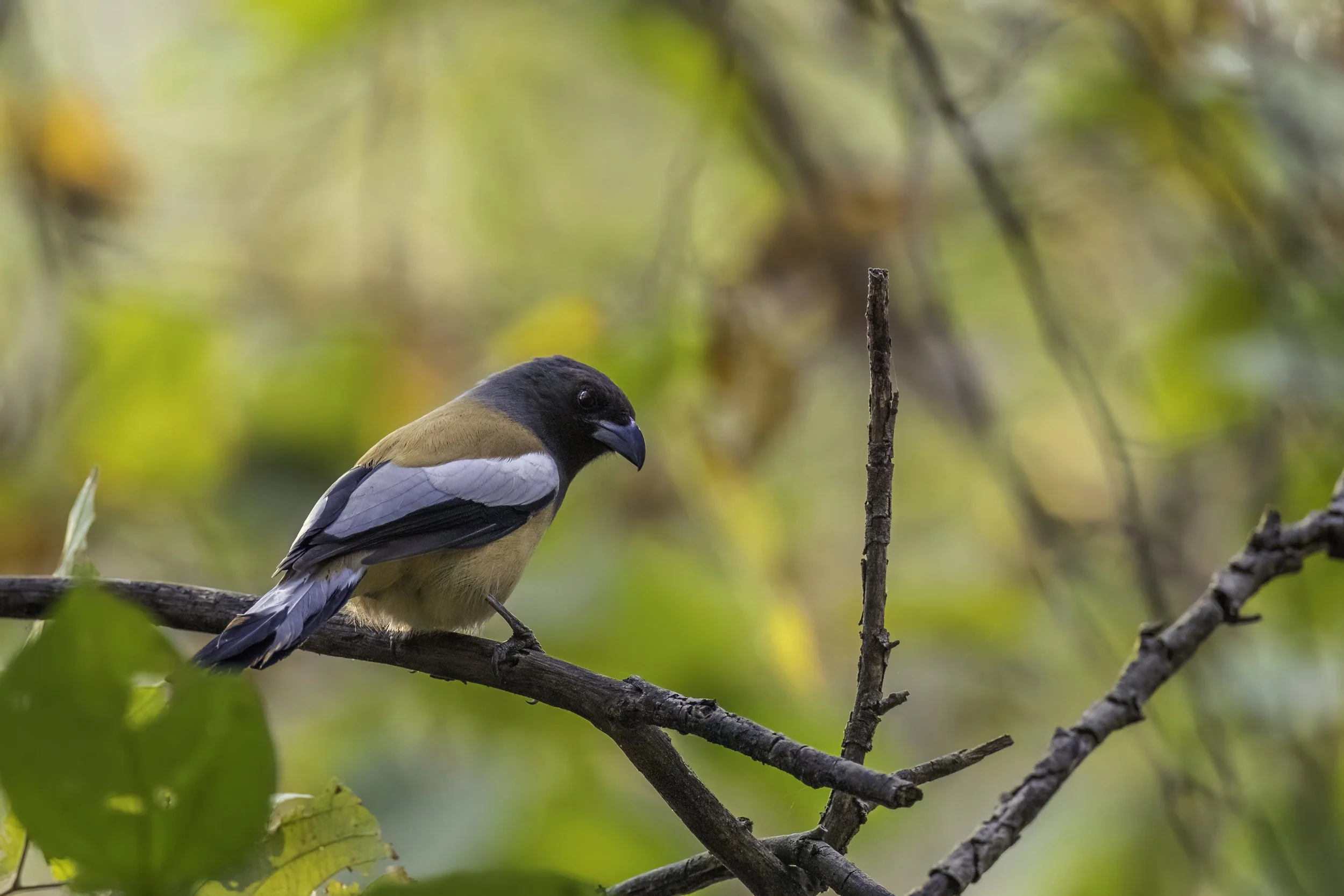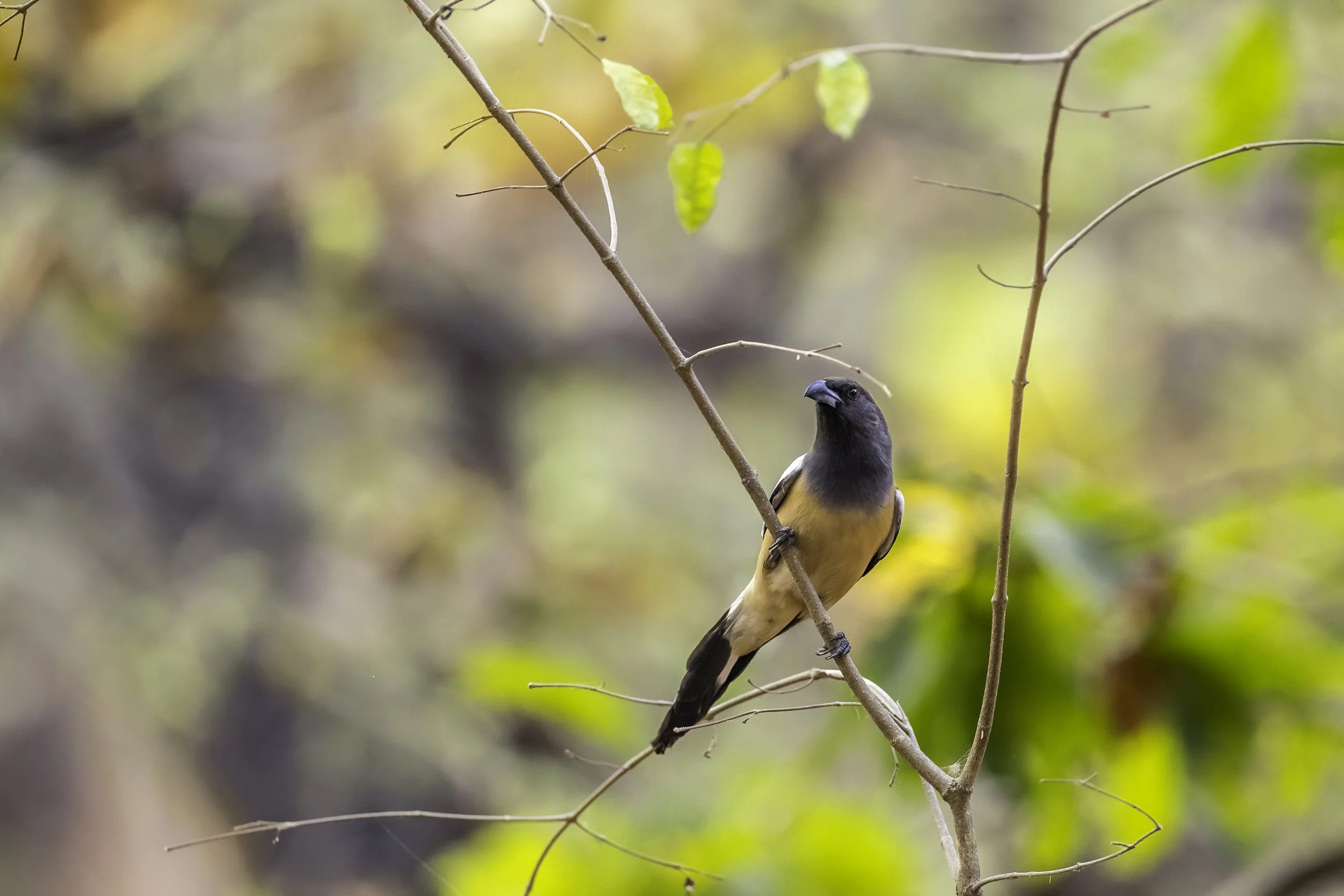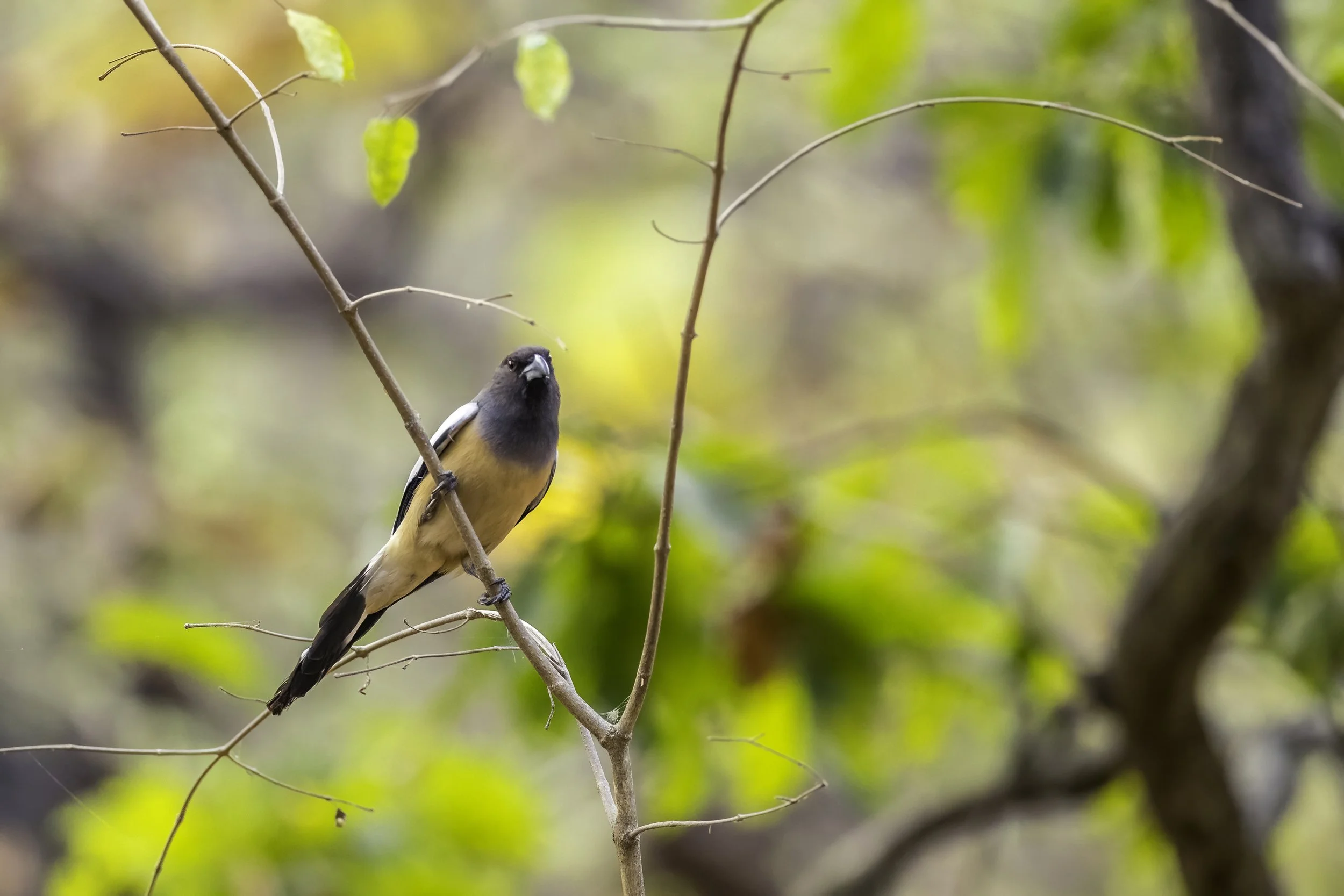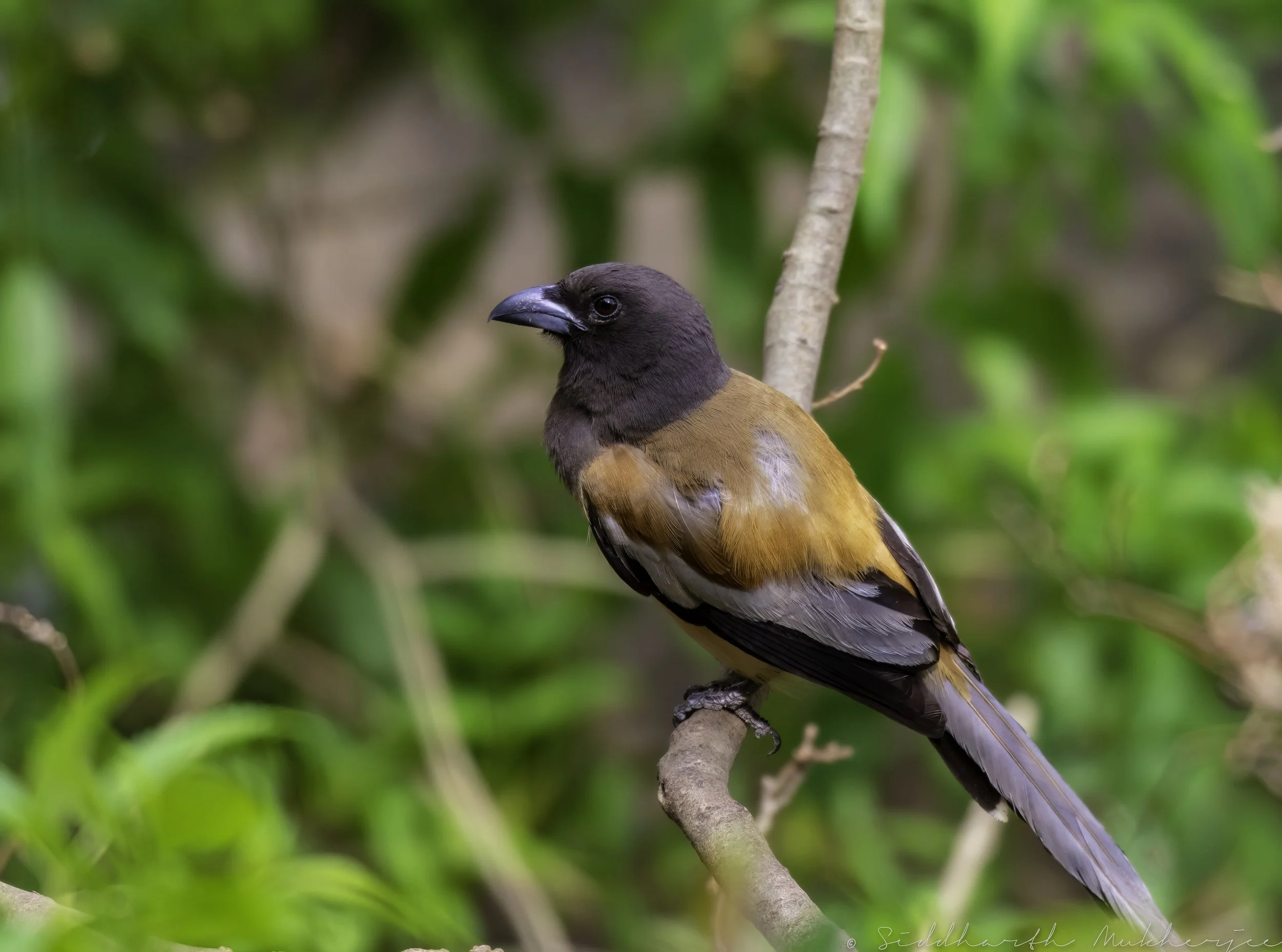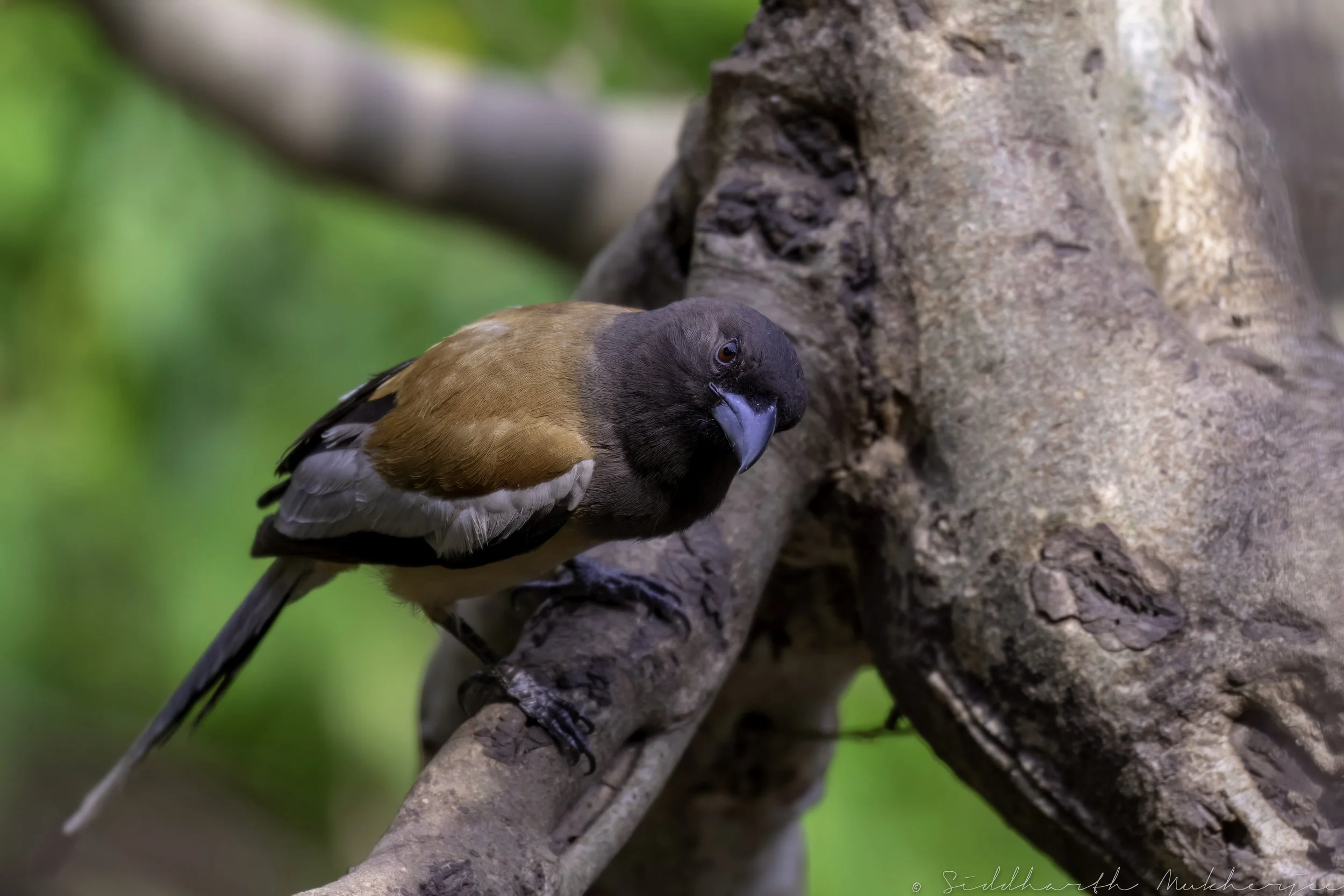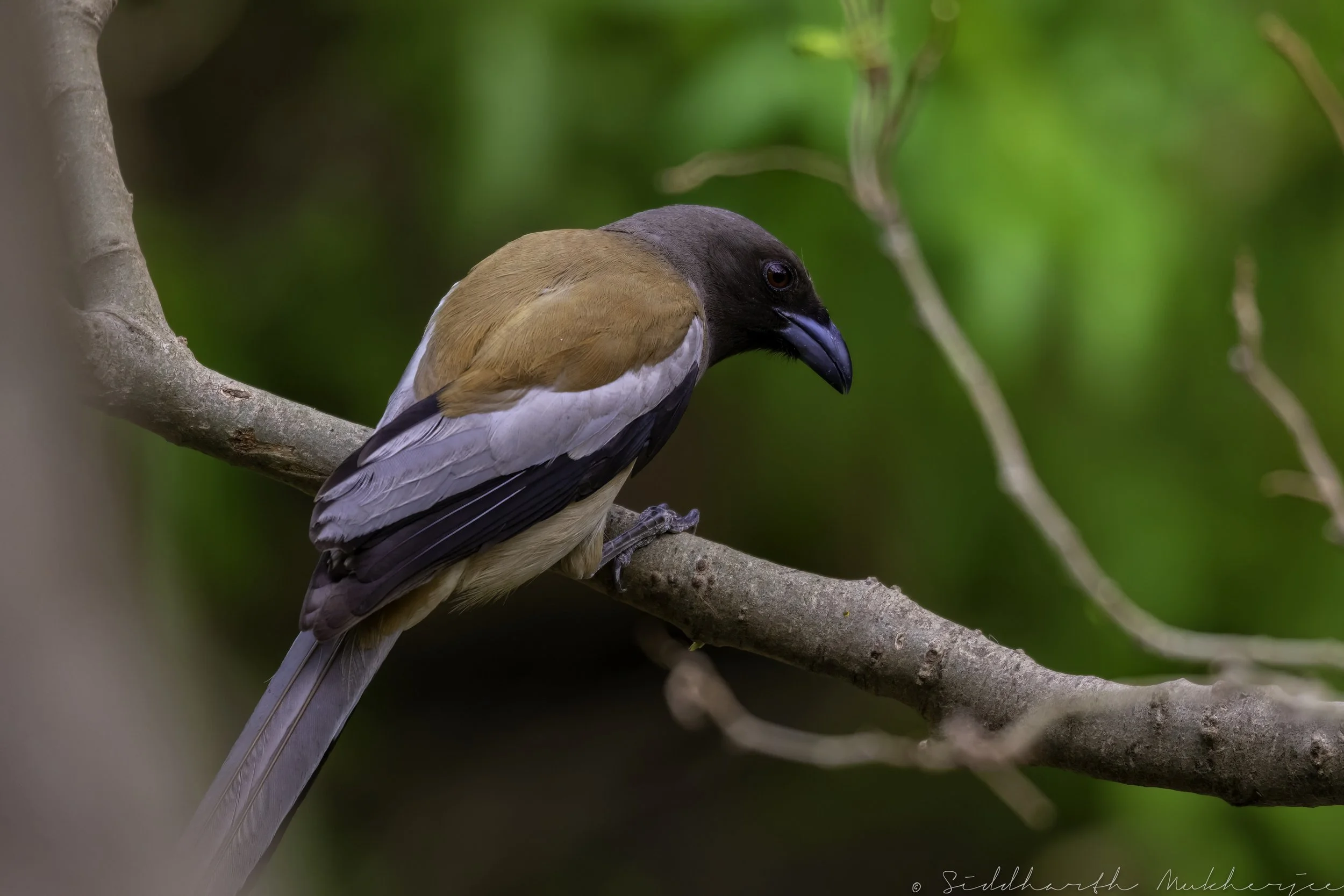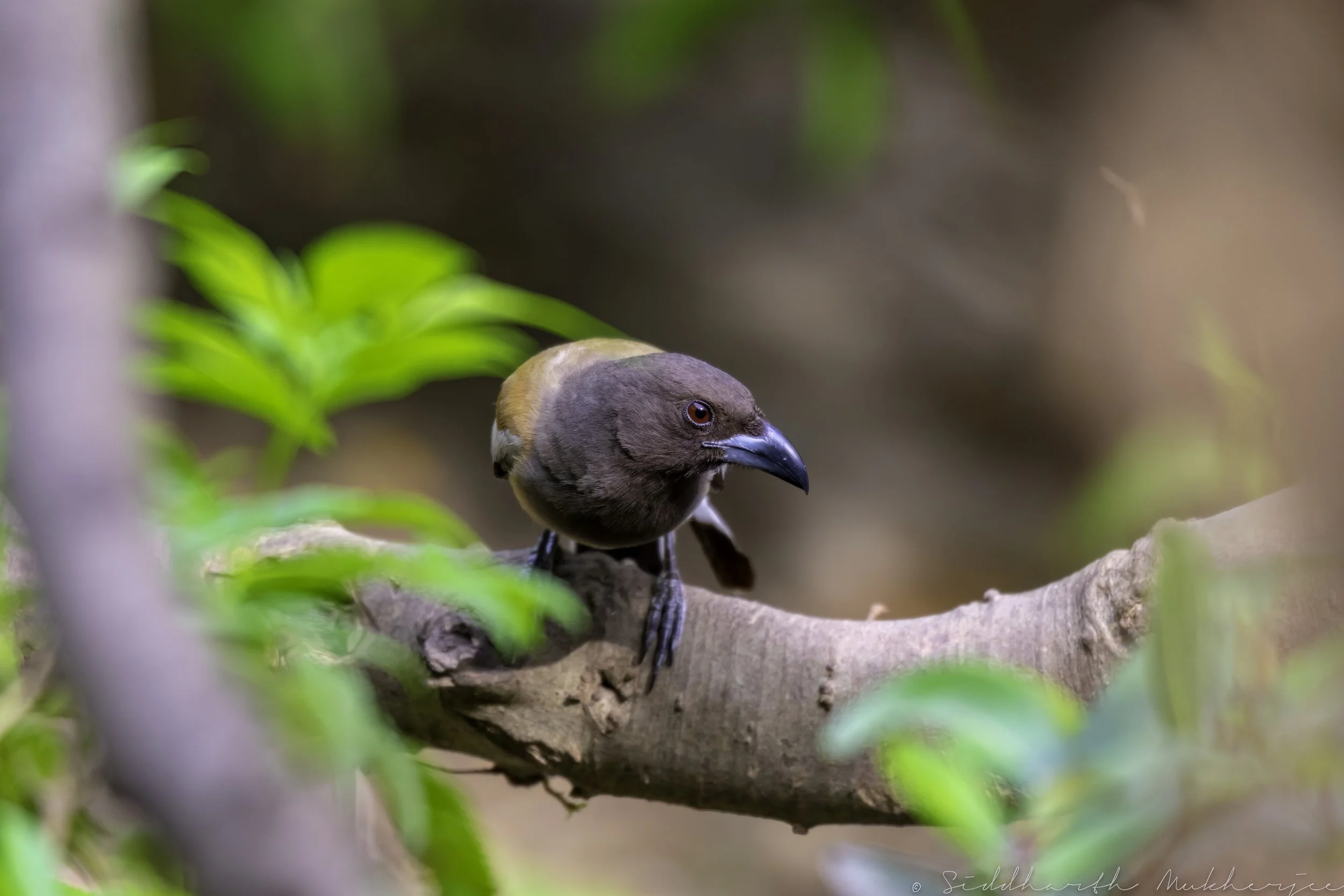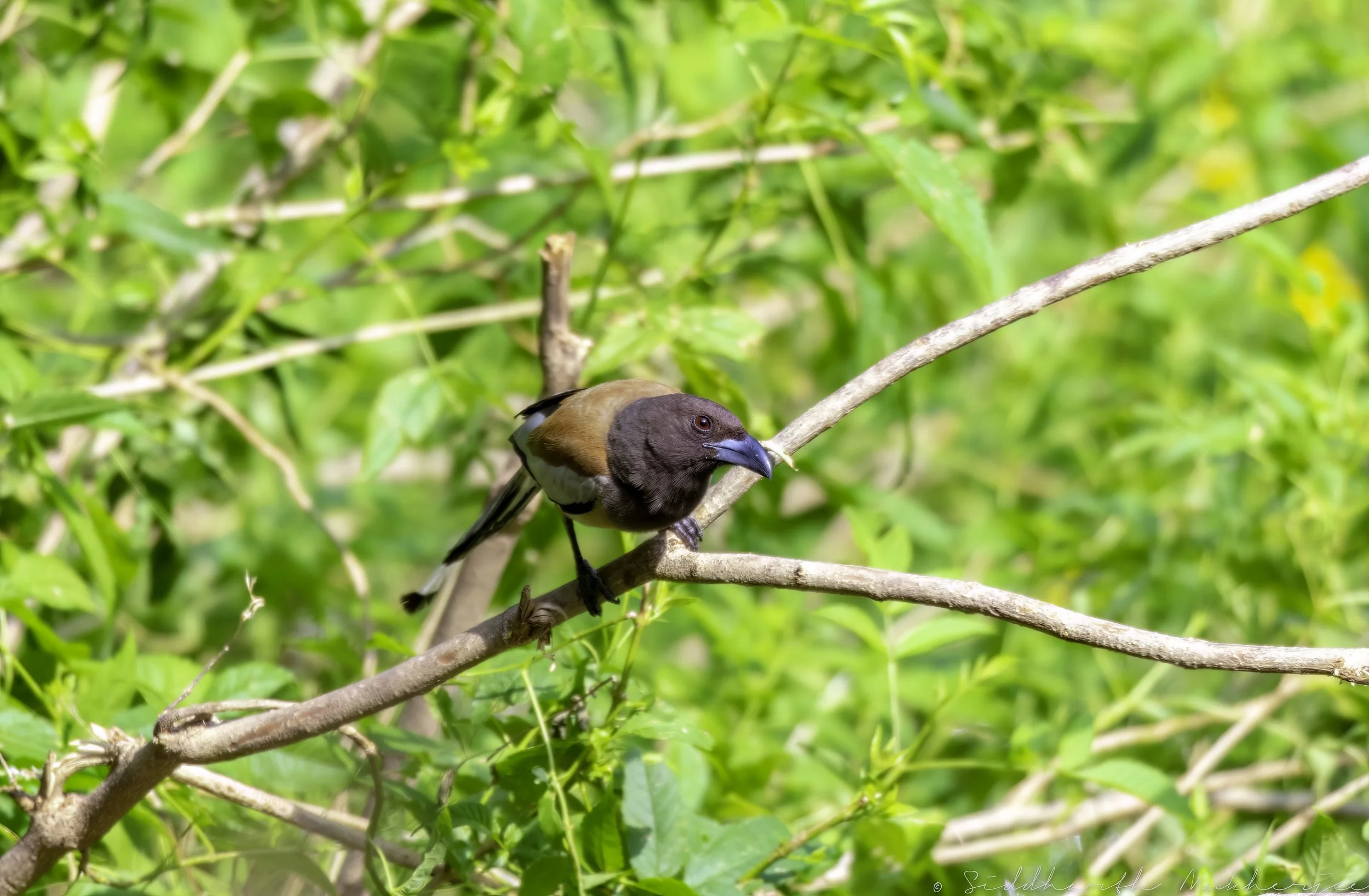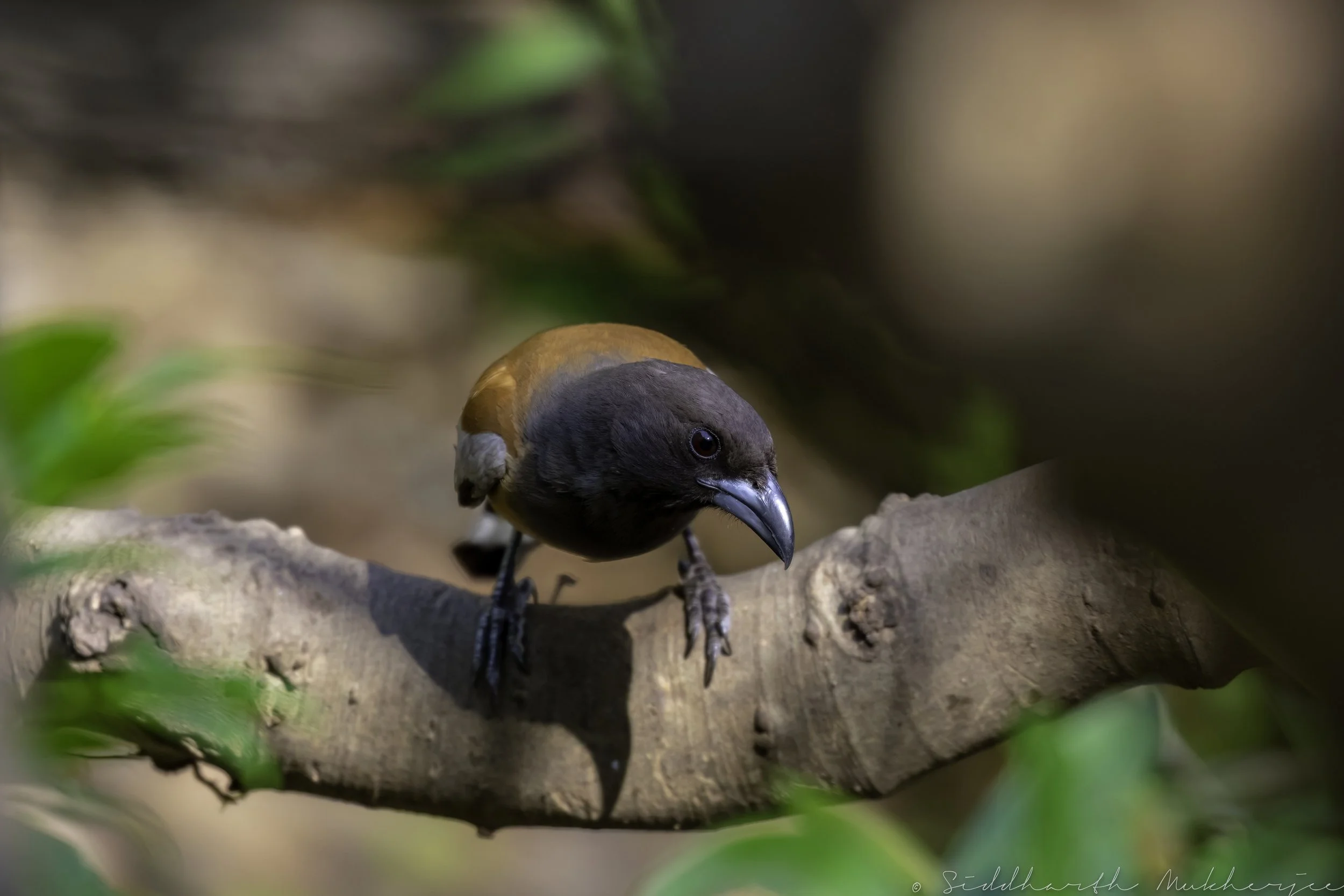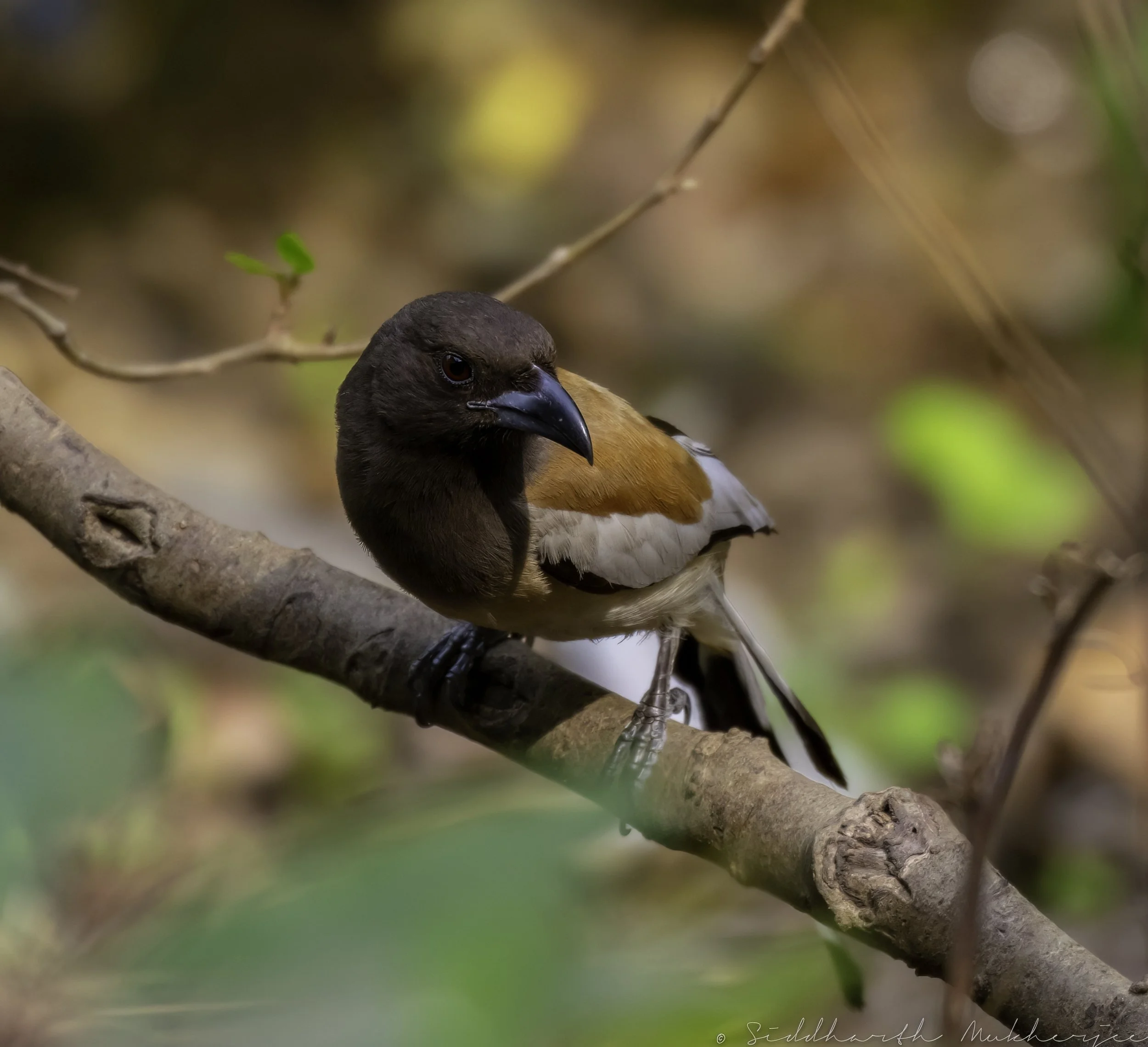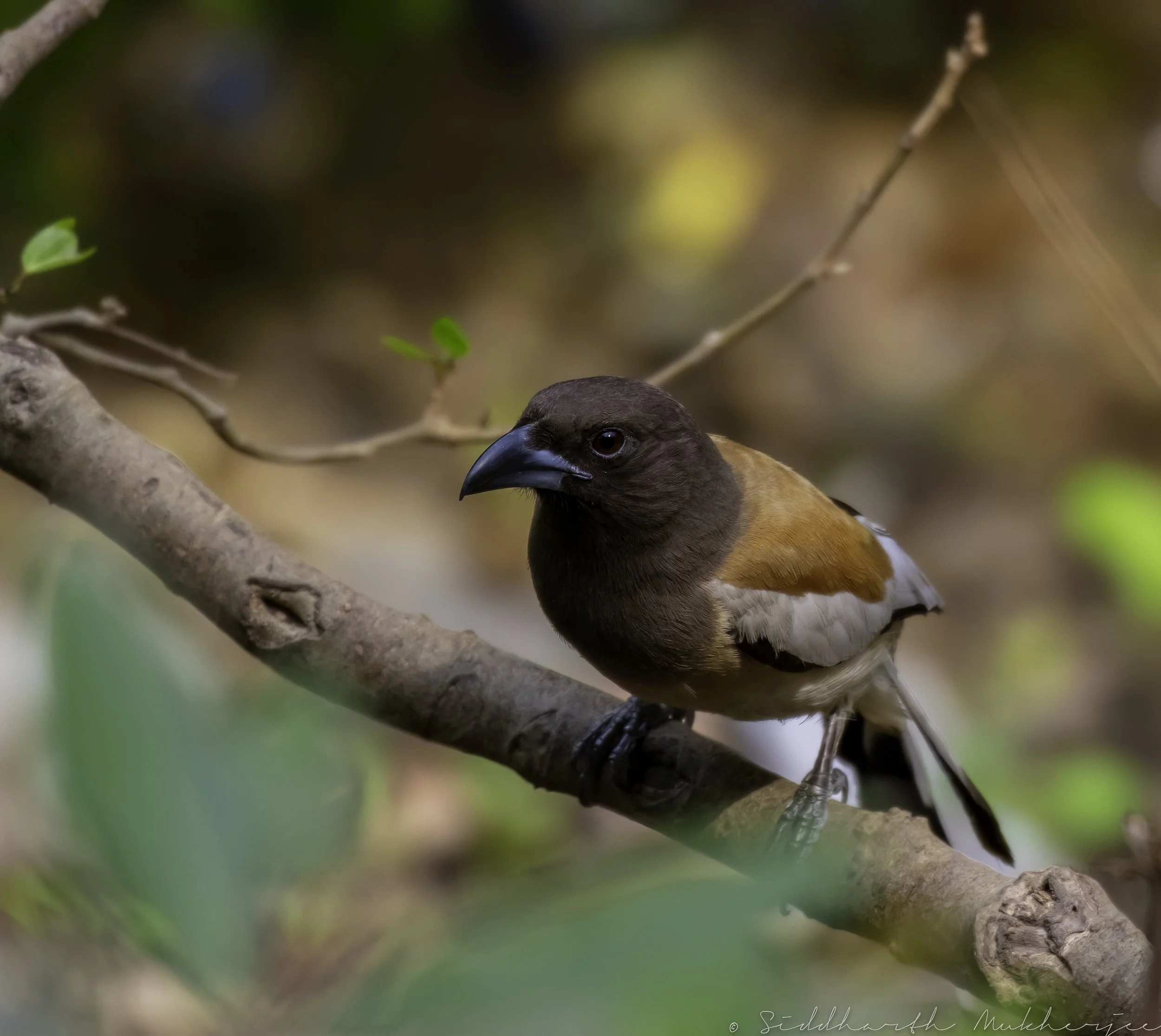Rufous Treepie
Dendrocitta vagabunda
Uma Maheshwaram Temple Complex & Ananthagiri Forest Range, Telangana
Located in the central stretch of the Deccan Plateau, Telangana has sub-tropical climate and the terrain consists mostly of hills, mountain ranges, and thick dense forests covering an area of 27,292 km². The annual rainfall ranges between 1,100 mm to 1,200 mm and the annual temperature varies from 15 C to 45 C. The State is drained by a number of rivers which include Godavari and Krishna.
Telangana is endowed with rich diversity of flora and fauna. It has dense teak forests on the northern part along the banks of river Godavari. As per the Champion & Seth Classification of Forest Types (1968), the forests in Telangana belong to three Forest Type groups, which are further divided into 12 Forest Types. The State Government has taken up a massive greening programme, 'Telangana Ku Harita Haram' in the State to plant and protect 230 crore seedlings over a period of 4 years. This initiative aims at achieving the twin objectives of increasing the forest cover and reduce pressure on the existing forest resources, through massive community participation by Vana Samrakshna Samithis (VSS) and Eco-Development Committees (EDCs) in Protected Areas and Watershed Development Committees in the Watershed areas. Recorded Forest Area (RFA) in the State is 26,904 km² of which 20,353 km² is Reserved Forest, 5,939 km² is Protected Forest and 612 km² is Unclassed Forests. In Telangana, during the period 1st January 2015 to 5th February 2019, a total of 9,420 hectares of forest land was diverted for non-forestry purposes under the Forest Conservation Act, 1980 (MoEF & CC, 2019). As per the information received from the State during that last two years, 12,730 ha of plantations including avenue plantations in the State.
Three National Parks and nine Wildlife Sanctuaries constitute the Protected Area network of the State covering 5.08% of its geographical area and our focus area today is the northern fringe of the Nallamalla forest located both in Telangana and Andhra Pradesh. Our bird today is from these forests near the Uma Maheshwaram Temple complex & the Ananthagiri Forest Range of Vikarabad.
Uma Maheshwaram is a temple dedicated to the Hindu god Shiva in Telangana, India dating back to the 2nd century A.D. Located in the Nallamala Forest around 100 km from Hyderabad on the Hyderabad-Srisailam highway (NH7), and 4 km from the village of Rangapur, Achampet, Nagarkurnool district, it is the northern gateway of Srisailam — one of the jyotirlingas. Uma Maheshwaram is located on a hill surrounded by high trees and the nearby hills shield the temple & the 500-metre stretch to PapaNasanam from sunlight for most of the day, maintaining a lower temperature than the surroundings throughout the year. PapaNasanam is renowned for the mystery surrounding its source of water and the also the apparently infinite nature of this water supply. One can always find a mug of water irrespective of how much has already been drawn from it throughout the year. The source of this infinite water is still unknown. Till date the jungles around PapaNasanam are home to numerous Sadhus who meditate here for spiritual enlightenment.
The Nallamala Forest surrounding this temple is part of the Eastern Ghats and hosts the Nagarjunsagar-Srisailam Tiger Reserve, the largest tiger reserve in India, spread over the five districts of Nandyala, Prakasam, Guntur, Nalgonda and Mahabub Nagar. The Nagarjunsagar-Srisailam Tiger Reserve is also home to numerous ancient temples especially the one at Srisailam of Lord Mallikarjuna and his consort goddess Bhramaramba, an incarnation of Parvathi as the fair-complexioned boon from Brahma. The Srisailam temple is one of the twelve sacred Shaiva Jyotirlingas and one of the eighteen Maha Shakthi peethas of India.
This area also contains the ruins of the Nagarjuna Viswa Vidyalayam and was once the location of many Buddhist universities and monasteries. The ruins of a fort from the 3rd century BCE Indian ruler, Ikshwaku Chandragupta overlook the Nirjivapuram (Lifeless city) valley. The ancient fort of king Pratap Rudra of the Kakatiya dynasty and several other forts are visible on the banks of the Krishna River. An ancient 169 km long wall constructed there by the Kakatiyas is an impressive historic feature. The area also contains several rock shelters and cave temples, including our focus area of Uma Maheshwaram, and others like Akka Mahadevi Bhilam, Dattatreya Bhilam, Kadalivanam, and Palankasari.
Ananthagiri Hills & Forest Range
Ananthagiri Hills is located in the Vikarabad district of Telangana. It is one of two major reserve forest blocks of the Vikarabad Forest Range the other one being the Damagundam Forest Reserve and each of these forest blocks is spread over a 10 square kilometre area. While the limits of Damagundam begin from Manneguda, a small town about 60 kms from Hyderabad, Ananthagiri block begins where the limits of Vikarabad end near the railway tracks. The Ananthagiri hills and their dense forests host many wild species like the Nilgai, Sambhar, Black Buck, Chital, Chowsingha, Chinkara, Wild Goats and many more. The streams from these hills flows into Osman Sagar, also known as the Gandipet lake, and Himayath Sagar. It is one of the denser forests in Telangana and is the birthplace (about 5 kilometers from the town of Vikarabad) of the Musi river, also known as the Muchkunda River, which flows through the capital city, Hyderabad. The Musi River after originating in these Ananthagiri Hills, about 90 kilometers to the west of Hyderabad and flowing due east for almost all of its course joins the Krishna River at Wadapally in the Nalgonda district after covering a total distance of about 240 km. Also in these forests is the Sri Anantha Padmanabha Swamy Temple, a Hindu temple dedicated to the Lord Vishnu.
According to the Skanda Purana it is believed this temple was installed by Rishi Markandeya in the Dvapara Yuga. Attracted by the peaceful atmosphere of the Ananthagiri Hills Rishi Markandeya came here for yoga sadhana. It is believed that the Rishi, on the strength of his spiritual powers, would visit Kasi daily for a bath in the sacred Ganges through a cave. One day he was not able to visit Kasi because the Dwadasi was in the early hours of the morning. Because of this miss the Lord Vishnu appeared, gave Darshan, in a dream and arranged for the Ganges to flow so the Rishi could take his bath daily without having to travel.
About 400 years back the Nizams of Hyderabad used these forests as their hunting grounds. It is said that the lord Vishnu in the form of Sri Anantha Padmanabha Swamy appeared in a dream and asked the then Nizam, Mir Osman Ali Khan, to build a temple for him. About 20 kilometers from the temple lies the Nagasamudram Lake or Kotipally Reservoir, a masonry dam.
It is one of the earliest habitat areas with ancient caves, medieval fort structures and temples that illustrate the antiquity of this area.
Read about some of the other birds I’ve photographed in these beautiful forests.
Rufous Treepie
The Rufous Treepie (Dendrocitta vagabunda) is a cousin of the crow and magpie, a common city and rural bird in India. Rufous Treepies are extremely intelligent and curious birds. These omnivores eat a wide range of foods from fruit, eggs, seeds, reptile and small invertebrates to honey and pretty much anything they can get their sharp beaks on. The Rufous Treepie is native to the Indian Subcontinent and adjoining parts of Southeast Asia. It is a member of the Corvidae (crow) family. It is long tailed and has loud musical calls making it very conspicuous. It is found commonly in open scrub, agricultural areas, forests as well as urban gardens. Like other corvids it is very adaptable, omnivorous and opportunistic in feeding.
The Rufous Treepie is an arboreal omnivore feeding almost completely in trees on fruits, seeds, invertebrates, small reptiles and the eggs and young of birds; it has also been known to take flesh from recently killed carcasses. It is an agile forager, clinging and clambering through the branches and sometimes joining mixed hunting parties along with species such as drongos and babblers. It has been observed feeding on ecto-parasites of wild deer. Like many other corvids they are known to cache food. They have been considered to be beneficial to palm cultivation in southern India due to their foraging on the grubs of the destructive weevil Rhynchophorus ferrugineus. They are known to feed on the fruits of Trichosanthes palmata which are toxic to mammals.
A long- and stiff-tailed bird with primarily rusty-brown upperparts and dull orangish underparts. The head, mantle, and neck region are a dull, sooty black. The long graduated tail is pale gray with a wide black terminal band. Note the conspicuous silvery-gray, white, and black patterns on the wings. The blackish-gray bill is stout with a hooked tip. Found in a wide range of habitats from woodlands to scrubby patches, singly or in pairs feeding in the treetops. The call is a loud metallic “krowwiiii kroo.” The sexes are alike and the main colour of the body is cinnamon with a black head and the long graduated tail is bluish grey and is tipped in black. The wing has a white patch. The only confusable species is the grey treepie which however lacks the bright rufous mantle. The bill is stout with a hooked tip. The underparts and lower back are a warm tawny-brown to orange-brown in colour with white wing coverts and black primaries. The bill, legs and feet are black.
The widespread populations show variations and several subspecies are recognised. The nominate subspecies is found in the northeastern part of peninsular India south to Hyderabad. The desert form is paler and called pallida, vernayi of the Eastern Ghats is brighter while parvula of the Western Ghats is smaller in size. The form in Afghanistan and Pakistan is bristoli while the form in southern Thailand is saturatior. E. C. Stuart Baker describes sclateri from the upper Chindwin to the Chin Hills and kinneari from southern Myanmar and northwest Thailand. The population in eastern Thailand an Indochina is sakeratensis.
The range of the rufous treepie is quite large, covering Pakistan, India and into Bangladesh, Myanmar, Laos, and Thailand. It inhabits open forest consisting of scrub, plantations and gardens. In the Garhwal Himalayas, it migrates seasonally between different elevations.
Rufous Treepie - Range & Distribution in India
Source: stateofindiasbirds.in
The breeding season in India is April to June. In Bengal, the peak is in April and May with heightened levels of pineal gland activity and serotonin production. It builds its shallow nest in trees and bushes and usually lays 3-5 eggs.
The rufous treepie has a wide repertoire of calls, but a bob-o-link or ko-kree call is most common. A local name for this bird kotri is derived from the typical call while other names include Handi Chancha and taka chor (="coin thief").
Some of these birds were photographed in and around the temple complex of Uma Maheshwaram. This is a temple dedicated to the Hindu god Shiva located in the Nallamala Forest around 100 km from Hyderabad on the Hyderabad-Srisailam highway, about 4 kms from the village of Rangapur, Achampet.
Uma Maheshwaram is the northern gateway of Srisailam — one of the jyotirlingas, on a hill surrounded by high trees. Nearby hills shield the Uma Maheshwaram temple and the 500-metre stretch to PapaNasanam from sunlight for most of the day, maintaining a temperature lower than the surroundings through out the year. The area abounds in flora and fauna like the beautiful and vulnerable Yellow-throated Bulbul. Read about the birds of Uma Maheshwaram.
‡‡‡‡‡
For a print of the beautiful birds from my various sojourns click on the button below to read my process and order a limited edition canvas.
Related Posts

